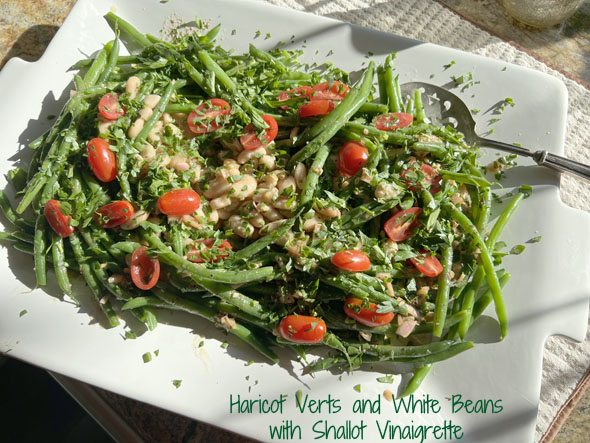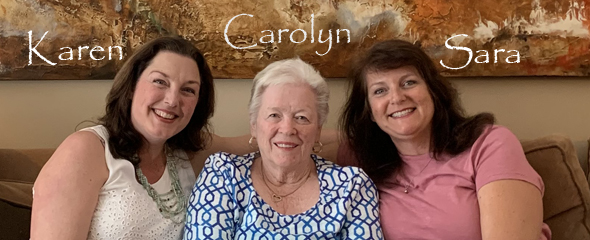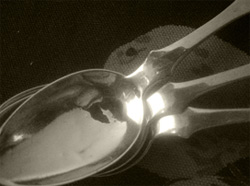 Love those haricot verts. One of my favorite vegetables.
Love those haricot verts. One of my favorite vegetables.
A post from Carolyn. A few years ago I was enjoying a dinner out with friends, and the waiter came to our table to tell us about the specials. He listed off several, then got to the last one and said the entree was served with harr-eh-cot-vertz. It was like scratching your fingernail on a blackboard. Oof. I quickly told him how to pronounce it – hair-eh-co-vehr. I don’t think he believed me because he gave me a rather blank look. I said, “next time you’re in the kitchen, go ask the chef.” He did, and came back later to say yes, I was correct. He asked me again how to say it and he painstakingly wrote it down on his little waiter notebook. Why exactly we don’t called them “baby green beans” I don’t know. For a long time (years ago) these beans were certainly considered “gourmet,” not ordinary, and were hard to find. I suppose it’s like a lot of French culinary words that have become part of our English speaking – like Bouillabaisse, or fondue, baba au rum, and others. How about boeuf bourgignon. There is no English translation of bourgignon. Hence, haricot verts, friends! I’m not a French speaker, but any good home cook will learn some French as they learn to cook and bake!
Just in case you don’t see them regularly in your market, they’re really just young green beans, plucked before they get big or woody or tough. Trader Joe’s sells them for a very good price in a little 12 ounce package. They’re all cleaned and trimmed. I used 3 packages for this salad/side dish.
The recipe came from David Tanis, the acclaimed chef and author. He worked at Chez Panisse for awhile, and currently writes a weekly column for the New York Times. This recipe came from an article in Food & Wine magazine a few years back.
The green beans are cooked just until bite-tender and cooled. The original recipe had you prepare dried white or cannellini beans, but I’m too lazy – I buy canned. But since there were seasonings in the dried beans as they cooked (onion, bay leaf and thyme) I decided to add onion powder, powdered bay leaf and dried thyme to the salad dressing instead. It was an easy substitution. I made the salad dressing the day before and let it sit out on my kitchen counter overnight, so the flavors would blend. The cannellini beans were drained and rinsed, then I combined just a bit of the dressing in with the beans and they sat in the frig overnight. When I was ready to serve, I scooped the beans down the center of the platter, then the haricot verts around the outside, sort of haphazardly, then drizzled the dressing over everything, using my hands a little bit to distribute the dressing on the beans. If you want to toss the dressing thoroughly with the green beans, do it separately then put them on the platter. I garnished the platter with some halved cherry tomatoes (mostly for color) and a bunch of chopped Italian parsley.
Everything for this was prepped the day before – in this case I was taking it to someone else’s home – so I just put everything into a big tote bag (separately) and composed the salad at serving time.
What’s GOOD: a lovely, different side veg or salad, however you want to think of it. The dressing was really nice. I’d definitely make this again, if only for the color/photo factor. I had several nice comments about the salad when it was served. Certainly there are different textures here – the soft cannellini beans and the just crisp-tender green beans. And the shallot vinaigrette was really delicious.
What’s NOT: only that you need to start a bit ahead, although you certainly could make this and serve it immediately. I wanted the salad dressing to meld a bit; that’s all.
printer-friendly PDF and MasterCook file (click link to open recipe)
* Exported from MasterCook *
Haricot Verts and Cannellini Beans with Shallot Vinaigrette
Recipe By: Adapted from David Tanis, Oct 2018
Servings: 12
30 ounces canned cannelini beans — drained and rinsed
2 pounds haricots verts — trimmed
DRESSING:
2 large shallots — minced
2 garlic cloves — minced
1/4 teaspoon onion powder
1/4 teaspoon powdered bay leaf
1 teaspoon dried thyme — crushed in your palms
1 tablespoon Dijon mustard
2 tablespoons sherry vinegar
2 tablespoons red wine vinegar
Kosher salt
1/2 cup extra-virgin olive oil
Freshly ground pepper
GARNISH:
1/2 cup cherry tomatoes — halved
1/4 cup chopped parsley
1. In a large pot of salted boiling water, cook the haricots verts until crisp-tender, about 3 minutes. Drain the beans and spread them on a towel-lined, large rimmed baking sheet to cool.
2. In a lidded jar, combine the shallots, garlic, onion powder, powdered bay leaf, dried thyme, mustard and both vinegars. Add a pinch of salt and let the vinaigrette stand for 10 minutes. Whisk in the olive oil and season with salt and pepper. Allow dressing to rest at room temperature for 2-3 hours or overnight to meld flavors. If time allows, combine the drained and canned beans with about 3 tablespoons of dressing and refrigerate until time to serve.
3. Arrange cannellini beans on a large platter and drizzle about 2 tablespoons dressing over them. Decoratively arrange the green beans around the platter and drizzle the remaining dressing on them. Season with salt and pepper, then sprinkle top with parsley and cherry tomatoes.
Per Serving: 143 Calories; 9g Fat (58.6% calories from fat); 4g Protein; 11g Carbohydrate; 3g Dietary Fiber; 0mg Cholesterol; 211mg Sodium; 2g Total Sugars; 0mcg Vitamin D; 30mg Calcium; 1mg Iron; 198mg Potassium; 68mg Phosphorus.






Leave a Comment!